As humans, animals respond to seasonal changes and need suitable accommodations to survive different weather conditions. Fish are no exception. So, can koi survive the Winter? Six tips for keeping them alive are covered below.
Can Koi Survive the Winter?
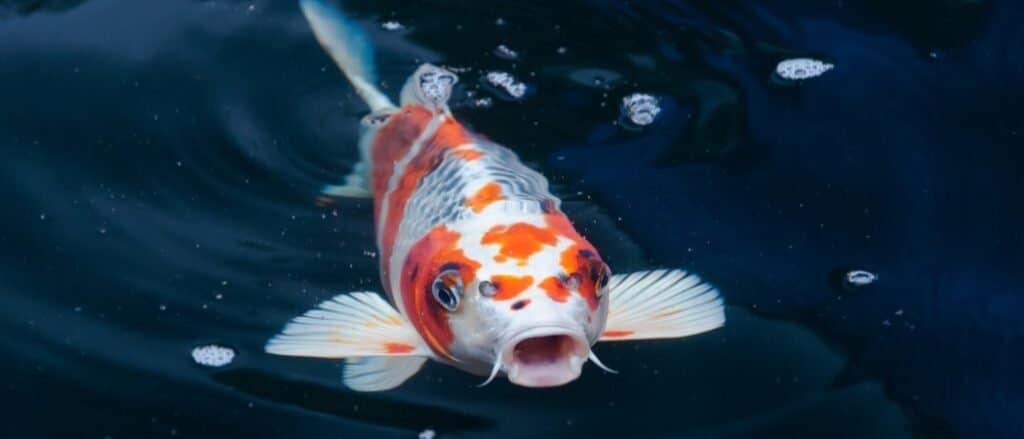
Koi can survive the Winter in outdoor ponds.
©PokkO/Shutterstock.com
Yes, koi can survive the Winter. Koi are cold-blooded, which means their bodies warm up and cool down with the environment. As temperatures drop, a koi’s body also cools down to cope.
How Cold Can Koi Get?
A koi can tolerate water temperatures down to about 40 degrees Fahrenheit. Any lower than that, and they are in danger of dying. Thirty-five degrees is generally considered fatally cold.
When pond water dips below 60 degrees Fahrenheit, koi start acting sedated. Their metabolism and immune systems start slowing down, and they quit swimming as much. When their pond is 60 degrees, a koi’s immune system operates at 20 percent of its average level.
By the time their pond reaches 50 degrees, their immune system is functioning, which is down to 10 percent. Torpor, or sluggishness and inactivity, begins at 45 degrees.
6 Tips for Keeping Koi Alive in Winter
There are a few rules to keep in mind to ensure the survival of your koi fish throughout the winter season. We’ll go over six essential tips now.
1. Make Sure the Pond Is Deep Enough
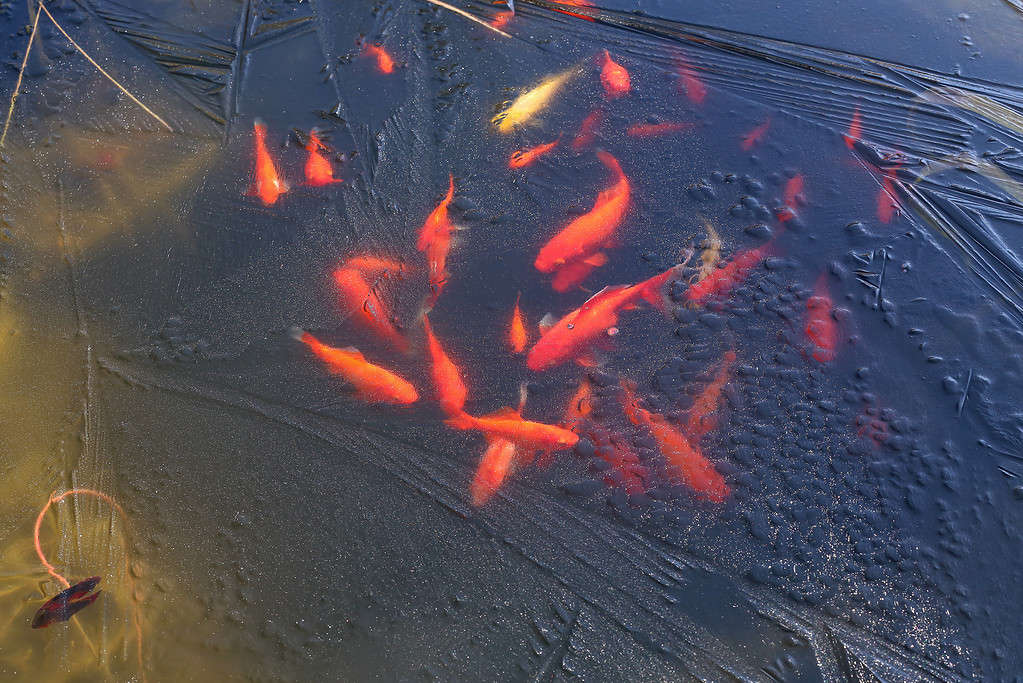
To keep koi safe outside in the Winter, know the frost line in your region.
©Wirestock/iStock via Getty Images
It’s important to know where the frost line is in your region. When temperatures drop enough to freeze surface water, the pond must have enough liquid water for the fish to take refuge. Depending on local weather, four feet of water or more is usually sufficient.
In general, there should be twice as much water in a pond than what freezes over to ensure enough warmth for the koi. If the deepest haven in a pond reaches 35 degrees or below, it will most likely be fatal to your fish.
There also needs to be enough space for the koi to move around in the Winter. While they’ll stay still most of the time, they need a little movement space. They have to swim a little to keep their joints healthy.
2. Use a Water Aerator
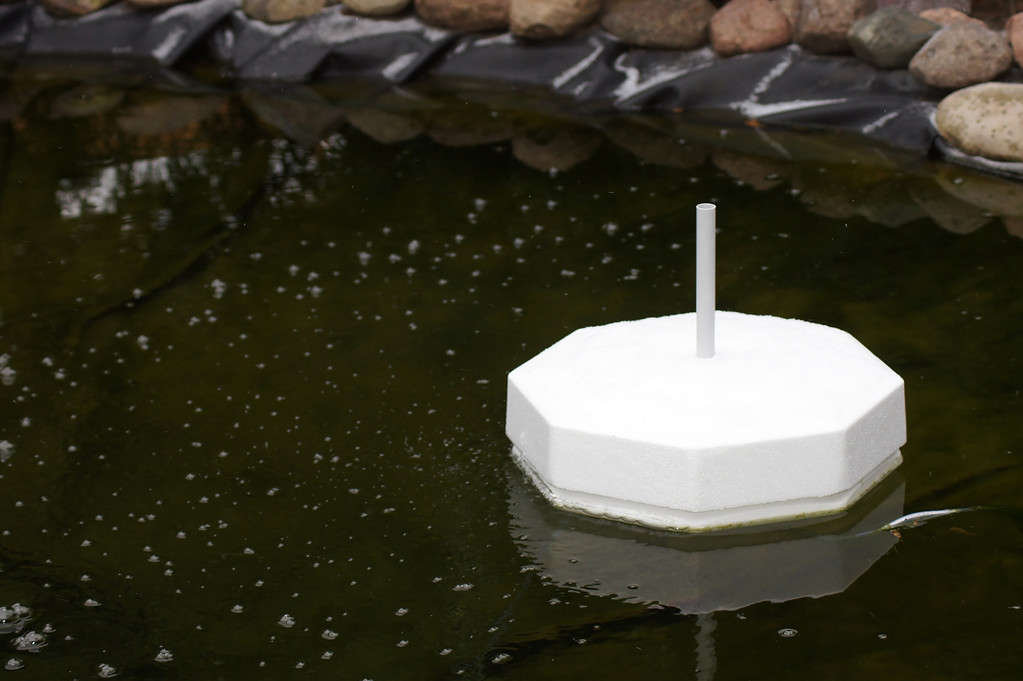
Aerating a koi pond during the Winter is advisable.
©Denise Hasse/iStock via Getty Images
While having ice-forming water isn’t necessarily dangerous, having the entire surface seal over can be deadly. Without an open surface, gas exchange can’t take place. Too many toxic gasses, like carbon dioxide, stay in the water while oxygen can’t get in.
Water movement helps keep ice from forming on the surface in the first place. However, ice should never be broken by banging to make it crack. The vibrations from this are bad for the fish and may damage their lateral line, which can kill them.
It’s also essential that the water aeration only moves the surface water. During the cold, fish must move as little as possible to conserve energy. It can stress them if they’re forced to react to water movement during this time.
If the water churns too much due to aeration, it will bring the warm water from the bottom of the pond up to the surface. This allows the warm water to cool down. As a result, the entire pond may be too cold for the fish to survive.
3. Keep Live Plants With the Koi
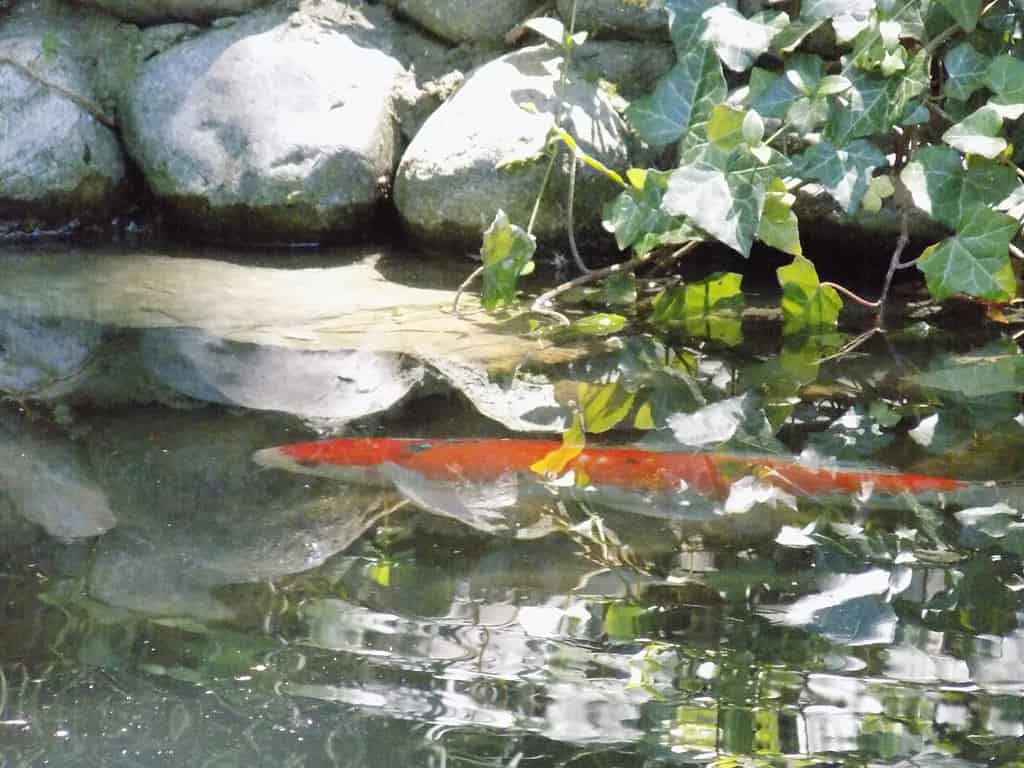
Keeping hardy winter plants in koi ponds helps clean the pond’s water.
©Magdevski/iStock via Getty Images
Some plants can withstand Winter and make an excellent addition to a koi’s home. That’s because they can help turn carbon dioxide in the water into oxygen.
Lotuses and water lilies work well if deep enough under the water. They won’t survive being frozen, but if they’re a few feet underwater, they’ll do well during the Winter.
Marsh marigolds, corkscrew rush, and pickerelweed do well in koi ponds during Winter. They will need their yellowed pieces trimmed in the fall, but they go dormant in Winter and can survive the cold.
4. Treat Koi for Parasites Before Winter
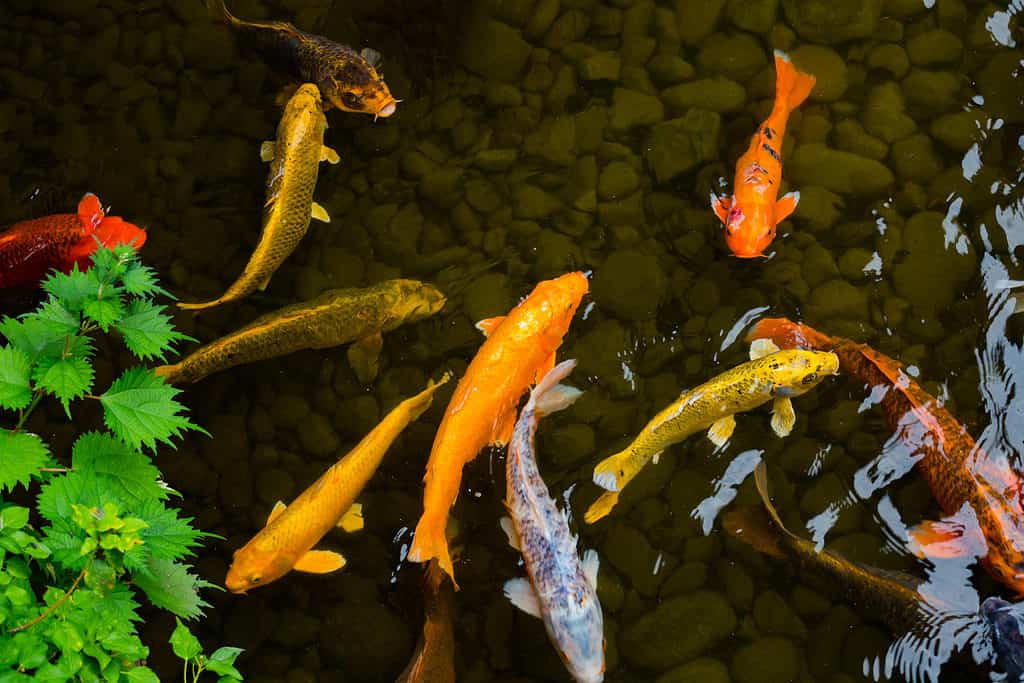
It’s best to treat koi for parasites right before temperatures cool.
©glory_yabe/Shutterstock.com
During the Winter, koi cannot be treated for parasites or diseases. That’s because their body cannot metabolize water additives, which makes medicines ineffective. It’s best to ensure the pond is parasite-free before the cool-down begins.
Since a koi’s immune system shuts down in the Winter to conserve energy, they become more susceptible to cold-tolerant parasites for a period. Some of these parasites include Chilodinella and Costia. Both parasites capitalize on stress in a fish’s life, leading to physical symptoms that can cause death.
5. Do Not Overfeed Koi During the Winter
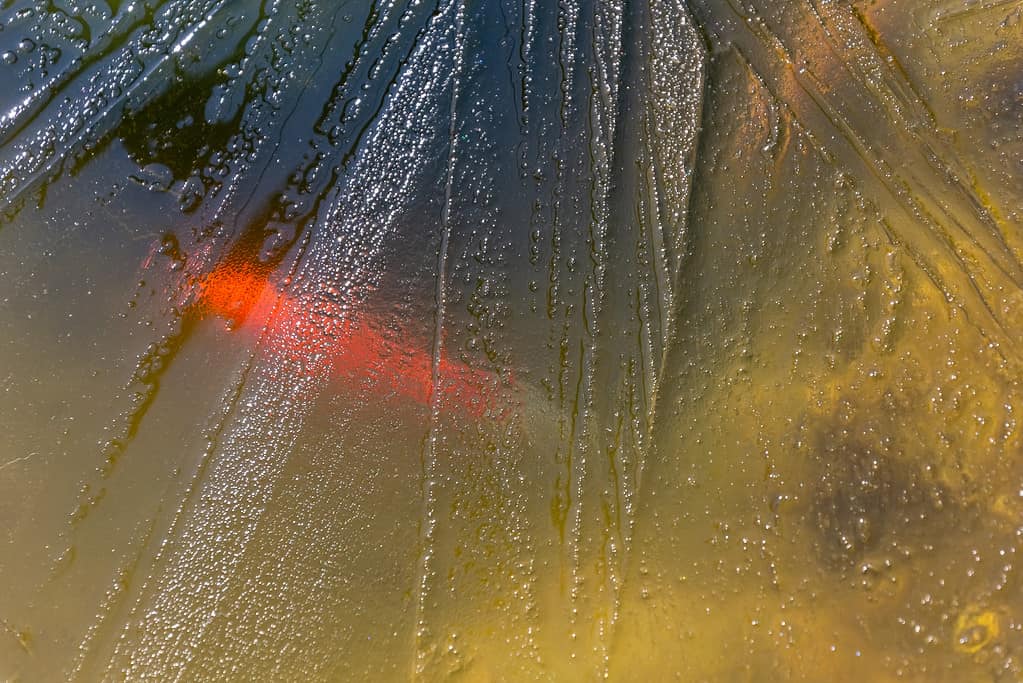
Koi do not eat during the Winter, so feeding is unnecessary.
©Herzstaub/iStock via Getty Images
As a koi’s metabolism slows, so does their need for food. They’ll live off of their fat stores during the cold months. If too much food is added to the pond when they aren’t eating, the decomposing food can create toxins, creating an unhealthy environment for your fish.
6. Bring Your Koi Inside for the Winter
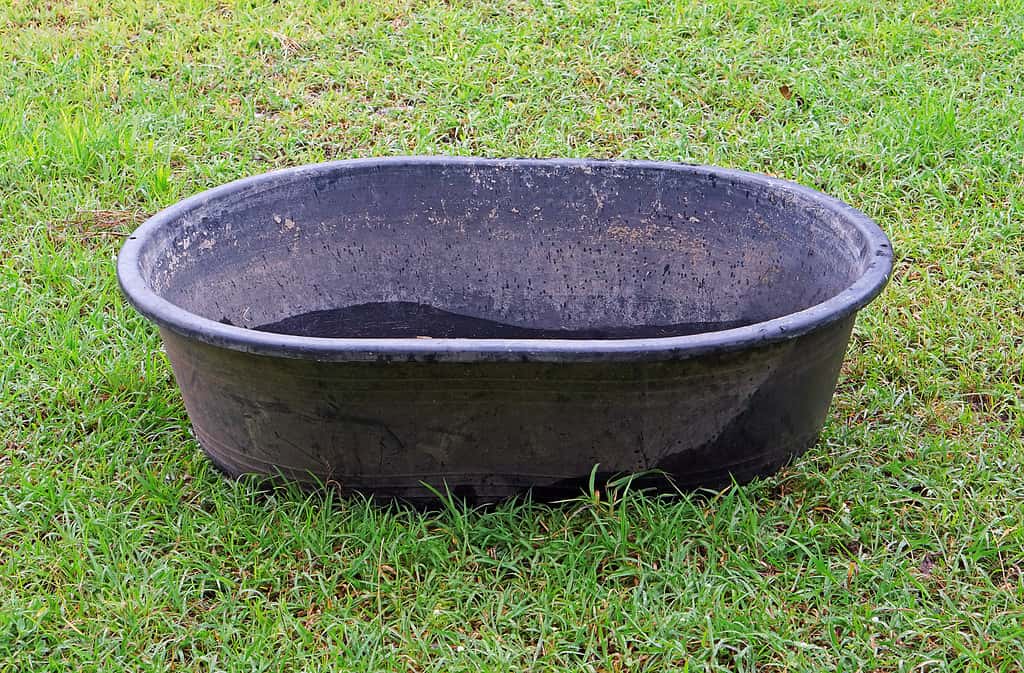
An indoor koi pond can be made from brand-new and cleaned stock tanks like the one shown.
©wasantistock/iStock via Getty Images
Bringing koi inside for the Winter is a safe option if you have the indoor space and the money for a proper setup. Koi cannot live in regular aquariums, but there are special tanks available that can accommodate the immense amount of space these fish need. Stock tanks used to water livestock that hold up to 1000 gallons can be equipped with extra gear to make a suitable home for fish.
Since the koi will be in a warm environment instead of outdoors, they’ll still need food, filtration, and aeration through the Winter. The koi will not slow into inactivity if they do not experience a considerable temperature change.
Summary of 6 Tips to Keep Koi Alive in the Winter
| Tips to Keep Koi Alive in the Winter | |
|---|---|
| 1 | Make Sure the Pond Is Deep Enough |
| 2 | Use a Water Aerator |
| 3 | Keep Live Plants With the Koi |
| 4 | Treat Koi for Parasites Before Winter |
| 5 | Do Not Overfeed Koi During the Winter |
| 6 | Bring Your Koi Inside for the Winter |
The photo featured at the top of this post is © FryFoto/iStock via Getty Images
Thank you for reading! Have some feedback for us? Contact the AZ Animals editorial team.






